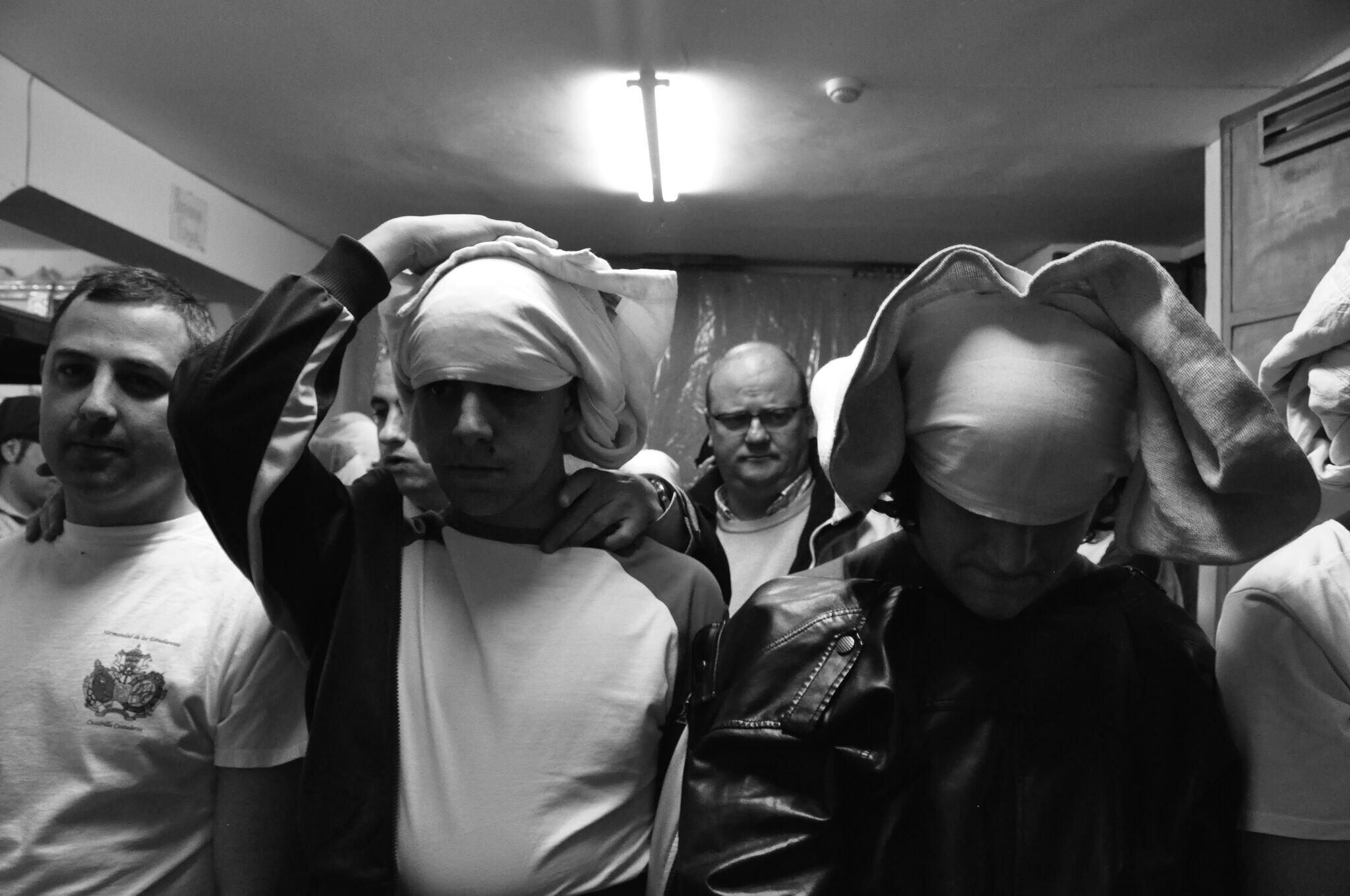
THE HOLIEST
2015
Video (color, sound), 10 min, 57 s
Exhibitions:
Art Basel Miami Beach, Travesía Cuatro, 2015.
‘El Santísimo’, CAB, Centro de Arte Caja de Burgos, Burgos, Spain, 2018.
Art production may not be any longer obliged to respond to certain aesthetics, quality in the making or to fulfill a specific function, nevertheless still it has to go through the ritual of rejection or approval. How are the processes of validation? Can we think of these processes in terms of canons? Which tensions exist between the different actors (artists, curators, museum directors, gallery owners...) and how do they achieve consensus?
The Holiest is an exercise of cultural translation that uses the ritual of the Costaleros to explore the set of beliefs, social agreements and power relations that regulate art practices today.The Costaleros are a group of men in charge of carrying the parihuela -litter or palanquin- upon which the sculpture of a religious figure such as Jesus of Nazareth or the Virgin Mary is placed and carried in a parade through the town or city's streets.
It started as a practical solution in the time of low-tech transportation systems, when churches would hire the men that worked transporting goods in ports and markets, to carry the divinity on their shoulders during the procession. Now, after it’s almost 400 years of history, is a thoroughly formulated art practice regulated by a body of canons in which every element has been decided upon, from the moves, the outfits, the music, to the very clear hierarchy that runs the performance, the capataz as the leader, the hermano mayor as a second adviser, the costaleros as the motor of the performance...
The film “The Holiest” is based on the Costaleros' rehearsals. The images show the training sessions during which they re-enact an abstract version of the real event. They simplify the palanquin, calculating the physical weight of the symbolic iconography (the sculpture, the silverwork, the fabrics, the wax candles…) and translate it to metal plates that they assemble atop the structure.
The narrative of the film has been constructed forcing a correlation between what we see in the performance and what could be a possible translation into the art context. The use of written subtitles facilitates entry points to a body of unspoken rules, where, just as in the religious parades, obedience, command, trust, faith, resistance, submission… have come to play a significant role.
In the installation at the CAB Museum in Burgos, Spain, the film is framed in a neutral space, in which the projection takes over the room as if it were a large altar painting. The sound completely dominates a space whose nudity helps to reinforce the presence of the enormous drawing that occupies the entire floor.
This drawing is a hybridization between the original layout of the CAB space and the architectural plan of the Burgos Cathedral in the year of its completion. An intervention that wants to expand the parallelism that is being made between artistic and religious practices and resume the discussion on the role of museums as new cathedrals of art.











